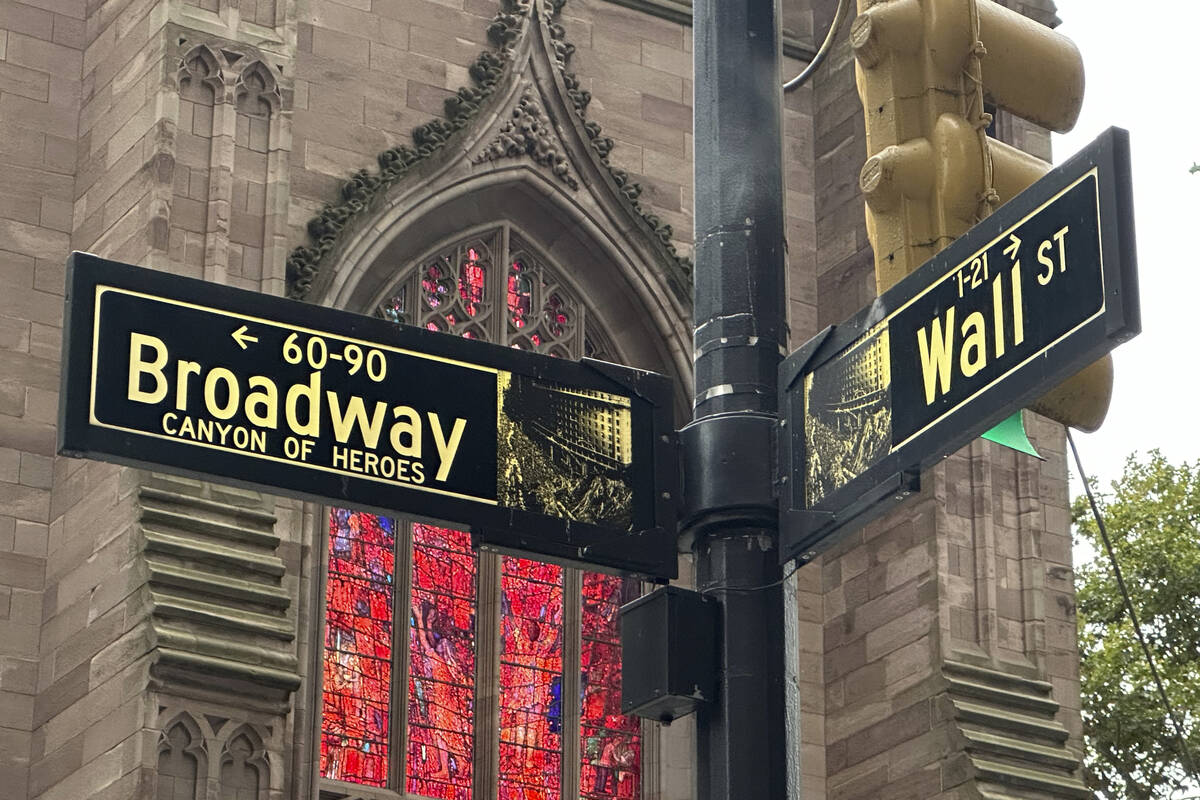After blockbuster jobs report, Dow rallies to a record
NEW YORK — U.S. stocks rallied Friday after a surprisingly strong report on the U.S. job market raised optimism about the economy.
The S&P 500 climbed 0.9% and got close to its all-time high set on Monday. The Dow Jones Industrial Average rose 341 points, or 0.8%, to set its own record, while the Nasdaq composite clambered 1.2% higher.
Leading the way were banks, airlines, cruise-ship operators and other companies whose profits can benefit the most from a stronger economy where people are working and better able to pay for things. Norwegian Cruise Line steamed 4.9% higher, JPMorgan Chase rose 3.5% and the small companies in the Russell 2000 index gained 1.5%.
They helped stock indexes claw back losses from earlier in the week, caused by worries that worsening tensions in the Middle East could lead to disruptions in the global flow of oil. Crude prices rose again Friday, but the moves were more modest than earlier in the week, as the world continued its wait to see how Israel will respond to Iran’s missile attack.
In the meantime, the strength of the U.S. economy reclaimed its spot as the top mover of markets.
Treasury yields soared in the bond market after the U.S. government said employers added 254,000 more jobs to their payrolls last month than they cut. That was an acceleration from August’s hiring pace of 159,000 and blew past economists’ forecasts.
It was a “grand slam” of a report, according to Lindsay Rosner, head of multi-sector investing within Goldman Sachs Asset Management. She said policy makers at the Federal Reserve, who have been trying to pull off the difficult feat of keeping the economy humming while getting inflation under control, “must be smiling.”
Friday’s report capped a week of mostly encouraging data on the economy, helping to allay one of Wall Street’s top questions: Can the job market continue to hold up after the Fed earlier kept interest rates at a two-decade high?
Before Friday’s jobs report, the general trend had been a slowdown in hiring by U.S. employers. That’s not surprising given how hard the Fed pressed the brakes on the economy through higher rates in order to stamp out high inflation.
But Friday’s blowout numbers bolstered hope that the U.S. economy will keep growing, particularly now that the Fed has begun cutting interest rates to give it more juice. The Fed last month lowered its main interest rate for the first time in more than four years and indicated more cuts will arrive through next year.
Friday’s jobs report was so strong that it pushed traders to abandon bets that the Fed will deliver another larger-than-usual cut to interest rates at its next meeting. They’re now forecasting zero chance for a cut of half a percentage point, according to data from CME Group. Just a week ago, they were saying it was better than a coin flip’s chance.
“This report tells the Fed that they still need to be careful as a strong labor market along with sticky housing/shelter data shows that it won’t be easy to engineer meaningfully lower inflation from here in the nearer term,” according to Scott Wren, senior global market strategist at Wells Fargo Investment Institute.
At Bank of America, economist Aditya Bhave expects the Fed to stop cutting its target for the federal funds rate when it hits a range of 3% to 3.25%. That’s a quarter of a percentage point higher than the bottom that he was earlier forecasting. The federal funds rate is currently sitting in a range of 4.75% to 5%.
Such diminished expectations for future cuts sent the yield on the two-year Treasury shooting up to 3.93% from 3.71% late Thursday. The 10-year yield jumped to 3.97% from 3.85%.
The forced rethink about how low rates will ultimately go hurt stocks of home builders, real-estate owners and other companies that benefit from easier mortgage rates.
D.R. Horton, PulteGroup and Lennar all sank at least 2.5% for three of the biggest losses in the S&P 500. Home Depot slipped 0.8% and was the biggest single reason the Dow Jones Industrial Average lagged other indexes. During the day, the Dow went from an early gain of 300 points to a modest loss and back to a big gain.
All told, the S&P 500 rose 51.13 points to 5,751.07. The Dow gained 341.16 to 42,352.75, and the Nasdaq climbed 219.37 to 18,137.85.
Also Friday, some 45,000 dockworkers at East and Gulf coast ports returned to work after their union reached a deal to suspend its three-day strike until Jan. 15 to provide time to negotiate a new contract. That helped calm worries that a lengthy strike could have pushed up on inflation and dragged on the economy.
In the oil market, the price for a barrel of Brent crude, the international standard, rose 0.6% to $78.05 per barrel to bring its gain for the week to 9.1%. A barrel of benchmark U.S. crude rose 0.9% to $74.38, up from roughly $68 at the start of the week.
In stock markets abroad, indexes rose across much of Europe following the strong jobs report from the world’s largest economy.
In Asia, Hong Kong’s Hang Seng jumped 2.8% in its latest sharp swerve. It soared a bit more than 10% over the week on excitement about a flurry of recent announcements from Beijing to prop up the world’s second-largest economy.
AP Business Writers Yuri Kageyama and Matt Ott contributed.























